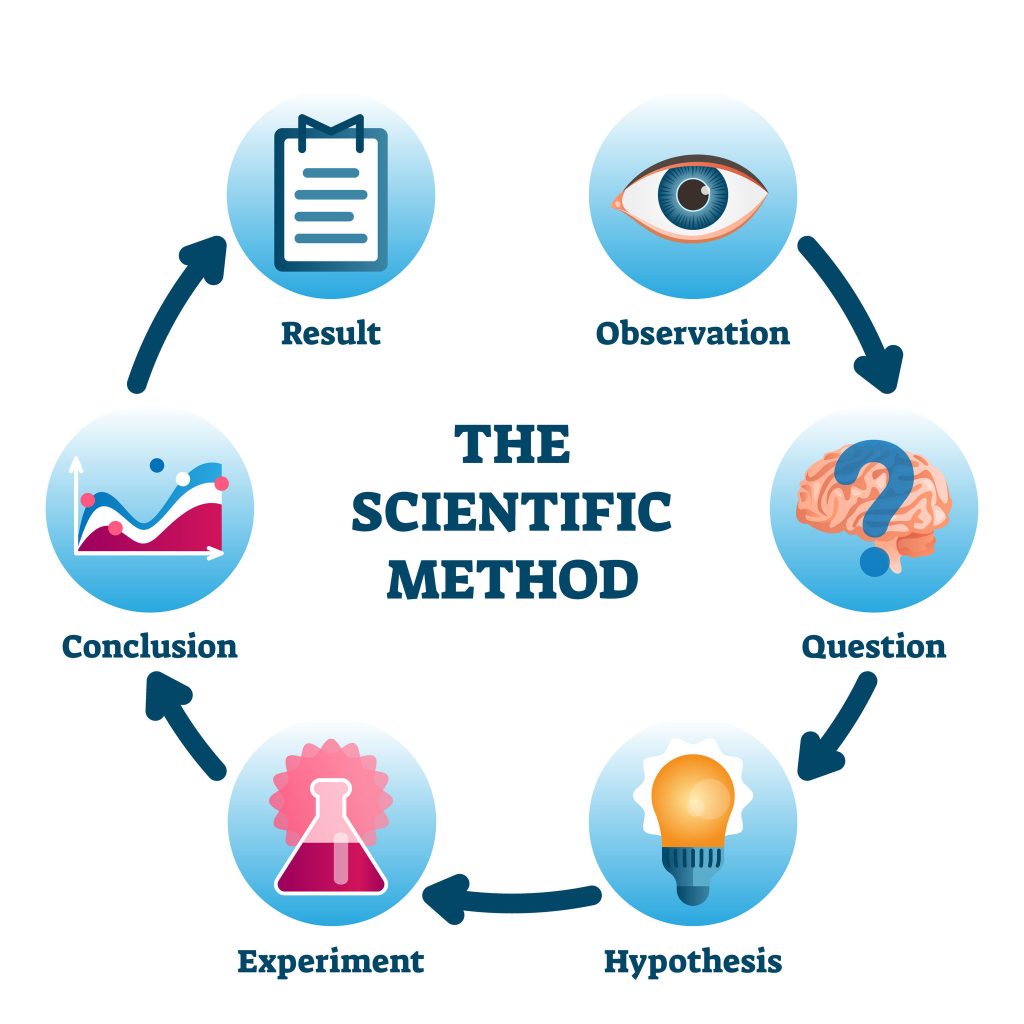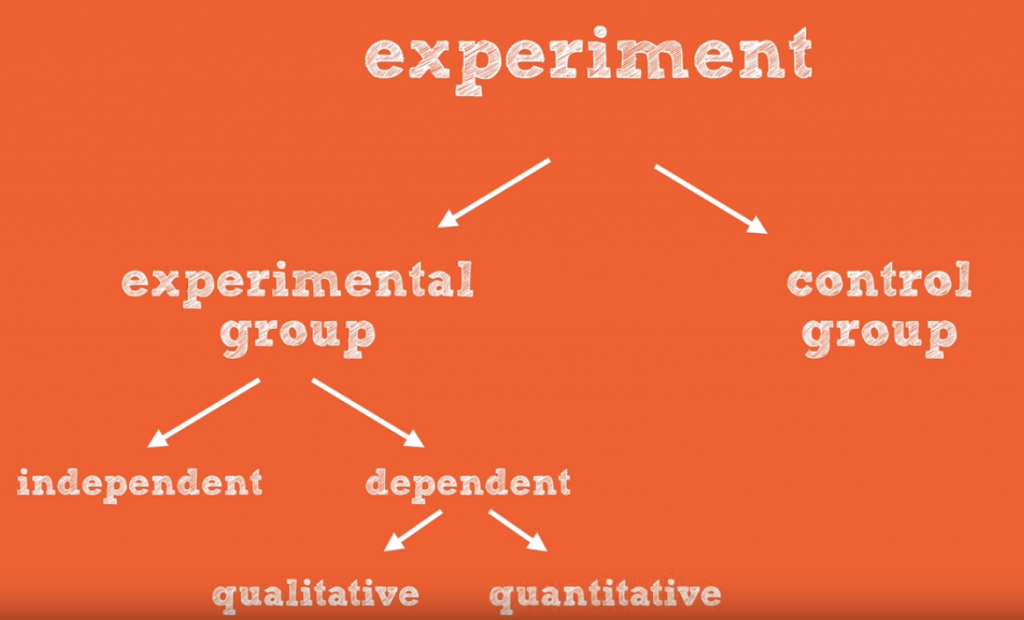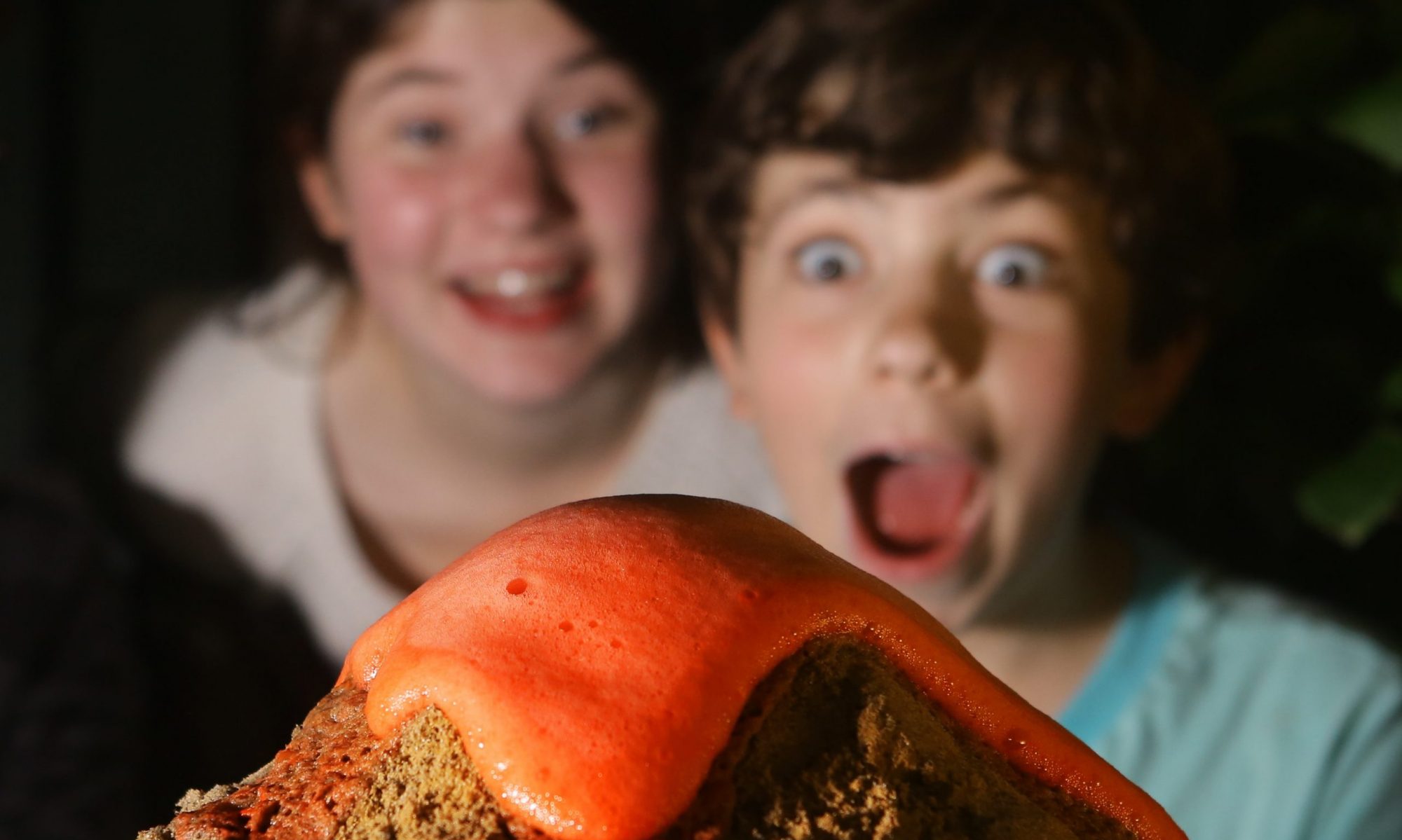The scientific method is a process for experimentation that is used to explore observations and answer questions. The aim is to discover cause and effect relationships by asking questions, carefully gathering and examining the evidence. Using all the available information is combined to provide an answer to a hypothesis.

The scientific method is often shown as a series of steps, however these steps are interrelated. When new information or observations are gathered a step can be repeated at any point during the process.
A process like the scientific method that involves such backing up and repeating is called an iterative process.

Observation uses all 5 senses: smell, sight, sound, touch & taste
When researching make sure you use reliable sources.
Your hypothesis is a prediction of what you think will occur using your observations and research.
When direct experimentation is not possible, scientists modify the scientific method.

Most experiments collect both qualitative and quantitative data and have an experimental group and a control group
Qualitative: data collected through observation
Quantitative: data using scientific equipment
Conducting a Fair Test
A fair test is a controlled investigation carried out to answer a scientific question. You can conduct a fair test by making sure that you change one factor at a time while keeping all other variables the same. You also need to consider accuracy, reliability and validity when planning an experiment or investigation. Confidence in your data and therefore conclusions are impacted by these factors.
- Comparing outcomes. To be confident in test results, it’s generally important to have something to compare them to.
- Controlling variables. In most tests, we want to be confident in the relationship between cause and effect.
- Avoiding bias. No matter how hard we humans try to be objective, bias can sneak into our observations and judgements. In a sense, bias occurs because it’s very difficult to “control” variables associated with human judgements.
- Distinguishing chance from real differences. All sorts of subtle things that you either don’t or cannot control can affect the outcome of a test.
An iterative process is a process for calculating a desired result by means of a repeated cycle of operations. An iterative process should be convergent, i.e., it should come closer to the desired result as the number of iterations increases.
When conducting hands-on science inquiry understanding the steps of the scientific method helps focus your scientific question and work through your observations and data to answer the question as well as possible.
Further Reading

